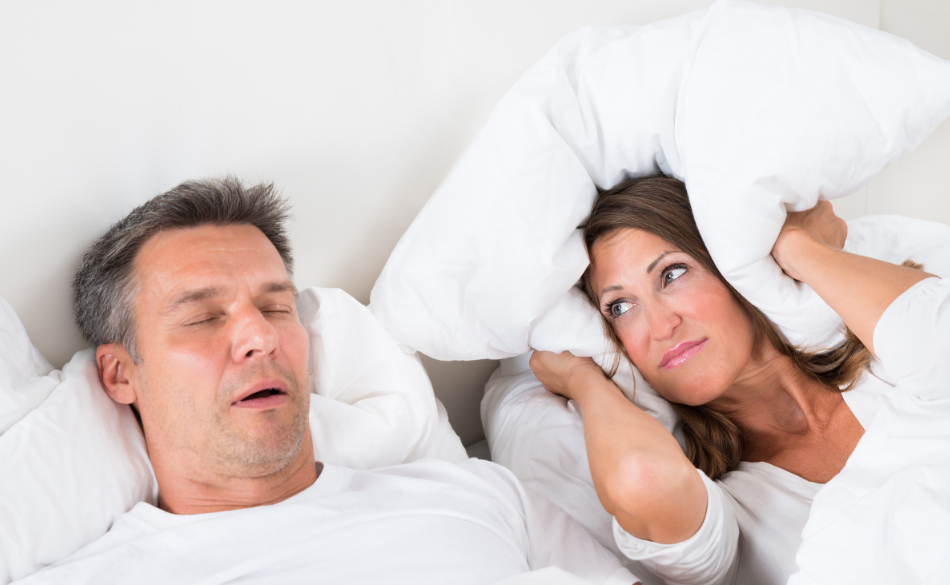

Sleep disorders are emerging as the most common disorder among youths. The root cause could be an unhealthy and stressful lifestyle. Many cases of sleep apnea go unnoticed as it occurs when you are asleep. If your symptoms are borderline, then you might fail to notice that you even have this disorder. Due to this reason, at-home sleep apnea testing device is available to the public to test their symptoms.
If you are curious whether or not you have this disorder, you can simply diagnose it using this device. To learn more about performing at-home tests and their risk factors, stick to the end of this blog.
Sleep apnea is a disorder that causes your breathing to stop when you are sleeping. However, due to a lack of oxygen, your brain goes into survival mode, which ultimately causes you to wake up, and as you wake up, your breathing is restored. In simple words, your brain's surviving reflex becomes your saviour. Otherwise, you wouldn't wake up at all.
Moreover, this disorder can prevent you from having enough oxygen, which can, in turn, give birth to other health conditions. You may want to consult a sleep specialist if you are aware that you gasp or snore while you are asleep. There are two kinds of sleep apnea:
The title of the condition is self-explanatory as it constantly obstructs your sleep. This can happen due to a blocked upper airway which can reduce or stop the airflow while asleep.
Its causes include anything which can block or constrict your airway, like large tonsils, changes in hormone levels or obesity. Also, medical conditions like high blood pressure, type 2 diabetes or heart failure can make you more susceptible to obstructive sleep apnea.
Central sleep apnea could be more advanced and complicated. It is related to the mobility of your brain. This condition occurs when your brain is unable to control your breathing. In this case, your brain fails to send signals that are needed to breathe. This signifies that your brain's motor skills which are responsible for the functioning of your airway and chest muscles, are compromised because of some underlying health condition
Diagnosing it is difficult as the line between central and obstructive sleep apnea often gets blurred. As a result, it's difficult to understand what kind of disorder you are dealing with. Some of the common symptoms of this sleep disorder are:
Episodes of stopped breathing ability while you are asleep.
Lack of oxygen can cause you to gasp for air while sleeping.
Snoring loudly.
Headache after you wake up in the morning.
Waking up with a dry mouth.
Difficulty in sleeping.
Daytime sleepiness.
Being absent-minded when awake.
Low sleep quality.
To diagnose sleep apnea, you must see a qualified sleep specialist. They will ask about your sleep history and symptoms to make a conclusive diagnosis. You can provide all this information by asking about it beforehand to the person who shares your bed at your home.
They might also ask you to take a sleep quiz just to be sure about your condition. If the evaluation indicates that you have this disorder, an extensive evaluation will occur, including overnight monitoring. There are two types of tests that you can take:
If your symptoms seem common, your primary care physician might start with a home sleep apnea test. It is a simplified test that you can take at home.
This at-home sleep test monitors your blood oxygen level, breathing patterns, heart rate and airflow. This test is usually recommended in the case of obstructive sleep apnea or moderate sleep apnea.
It is a laboratory-based diagnosis that is useful for a more accurate reading as an overnight sleep study is conducted in the presence of a specialist. Polysomnography is a test that monitors your blood oxygen levels, brain waves, heart rate and breathing while you are asleep.
Additionally, it records your eye and leg movements. This sleep study takes place in a sleep lab within a hospital under the supervision of a specialist. This sleep test monitors your heart, lung and brain activity and effectively diagnoses central sleep apnea.
Treating sleep apnea has become easier with the availability of tools. Since OSA is not a progressive disorder, you can easily manage it. Some of the therapies for OSA are:
Continuous positive airway pressure (CPAP).
Other airway pressure devices like auto-CPAP devices or BPAP.
Sleep apnea can cause several problems in an individual's day-to-day life. It can also disrupt the whole functionality of your body. Thus, if you suspect you have this disorder or feel like you stop breathing while asleep, having it diagnosed by going through a sleep test should be your top priority. It has become easier to treat it as numerous treatment options are available. At-home sleep tests are effective in diagnosing OSA.
Leave a comment